Walter Lewin, Michiel van der Klis0521826594, 9780521826594
Table of contents :
Cover……Page 1
Half-title……Page 3
Series-title……Page 4
Title……Page 5
Copyright……Page 6
Contents……Page 7
Contributors……Page 13
Preface……Page 17
1.1 Introduction……Page 19
1.1.1 X-ray binary systems……Page 20
1.1.2 Accretion onto compact objects……Page 21
1.2 Pulsating neutron stars……Page 23
1.2.1 Classical (slow) accretion-powered pulsars……Page 24
1.2.1.1 Spin-period evolution……Page 25
1.2.1.2 Quasi-periodic oscillations……Page 26
1.2.1.3 Cyclotron lines……Page 28
1.2.2 Millisecond accretion-powered pulsars……Page 29
1.3.1 Transient and persistent sources……Page 32
1.3.2 Long-wavelength counterparts……Page 34
1.3.3 Jets……Page 38
1.3.4 X-ray and gamma-ray spectroscopy……Page 39
1.3.5 Variability……Page 42
1.3.6 Thermonuclear bursts……Page 46
1.3.8 The nature of the central object in non-pulsing X-ray binaries……Page 49
1.4 Accretion-powered X-ray sources in the twenty-first century……Page 51
References……Page 52
2.1 Introduction……Page 57
2.2 Timing……Page 58
2.2.1 Fourier analysis……Page 59
2.2.2 Time-series modeling……Page 60
2.3.1 Photometric method……Page 61
2.3.3 Presentation and parametrization of CD/HIDs……Page 62
2.4.1 Neutron stars vs. black holes……Page 63
2.4.2 Low-magnetic-field object types……Page 64
2.5 Source states……Page 65
2.5.1 Black-hole states……Page 68
2.5.2.1 Z sources……Page 71
2.5.2.2 Atoll sources and weak LMXBs……Page 72
2.6.1 High-frequency phenomena……Page 73
2.6.2 The low-frequency complex……Page 75
2.7.1 Frequency correlations in neutron stars……Page 77
2.7.2 Frequency correlations of black holes compared to neutron stars……Page 79
2.8.1 General-relativistic orbital motion……Page 82
2.8.2 Relativistic precession models……Page 85
2.8.3 Relativistic resonance models……Page 87
2.8.4 Beat-frequency models……Page 88
2.8.5 Preferred radii……Page 90
2.8.7 Modulation……Page 91
2.9.1 Kilohertz quasi-periodic oscillations……Page 92
2.9.1.1 Relation with luminosity……Page 94
2.9.1.2 Relation with neutron-star spin……Page 95
2.9.1.3 Interpretations……Page 98
2.9.3 The low-frequency complex……Page 99
2.9.5 Peculiar low-magnetic-field neutron stars……Page 100
2.10.1 High-frequency QPOs……Page 105
2.10.2 The low-frequency complex……Page 107
2.10.4 Other phenomena and peculiar objects……Page 109
2.11 High-magnetic-field neutron stars……Page 110
2.12.1 Disk-oscillation models……Page 111
2.12.2 Energy dependencies: amplitude, phase, cross-coherence……Page 112
2.12.3 Intrinsically aperiodic models……Page 113
2.13 Final remarks……Page 114
Acknowledgements……Page 115
References……Page 116
3.1 Introduction……Page 131
3.2.1 Nuclear burning during accumulation and ignition……Page 133
3.2.2 Burning during the bursts: the rp-process……Page 135
3.2.3 Mixed H/He bursts from GS 1826–238……Page 136
3.3 Observational overview of bursts……Page 138
3.3.2 Photospheric radius expansion bursts……Page 139
3.3.3 Recent progress in burst spectroscopy……Page 142
3.3.4 Recurrence intervals and the dependences……Page 144
3.4 Millisecond variability during X-ray bursts……Page 146
3.4.2 Oscillations during the burst rise……Page 147
3.4.3 Oscillations in the decay phase……Page 149
3.4.4 Frequency evolution of burst oscillations……Page 150
3.4.5 Long term stability of burst oscillation frequencies……Page 153
3.4.6 Burst oscillations and the mass accretion rate……Page 154
3.4.7 Burst oscillations and photospheric radius expansion……Page 155
3.4.8 Harmonics, subharmonics and sidebands……Page 156
3.4.9 Burst oscillations as probes of neutron stars……Page 157
3.4.10 Spin modulation: implications for neutron star spin in LMXBs……Page 158
3.4.11 Theoretical implications of burst oscillations……Page 159
3.5 Superbursts: a new burning regime……Page 161
3.5.1 Time profiles and spectra……Page 164
3.5.3 Quenching of normal burst activity……Page 165
3.5.5 Theory of superbursts: ashes to ashes……Page 166
3.6 Summary and future prospects……Page 169
References……Page 170
4.1.1 Scope of this review……Page 175
4.1.2 The 18 black hole binaries……Page 176
4.1.3 Black hole candidates……Page 180
4.1.5 Accretion onto black holes……Page 182
4.1.6 Some consequences of an event horizon……Page 186
4.2.1 ASM lightcurves of BH binaries and BH candidates……Page 187
4.2.1.1 Black hole binaries……Page 188
4.2.1.2 Black hole candidates……Page 190
4.2.2 Synoptic studies of selected black hole binaries……Page 193
4.2.3 Relativistic iron emission lines……Page 194
4.2.4 Super-Eddington luminosities……Page 196
4.3.1 Historical notes on X-ray states……Page 197
4.3.2 X-ray states as different physical accretion systems……Page 198
4.3.4 Quiescent state……Page 199
4.3.5 Thermal-dominant (TD) state or high/soft (HS) state……Page 201
4.3.6 Hard X-ray state associated with a steady radio jet……Page 204
4.3.7 Steep power-law (SPL) state or very high (VH) state……Page 208
4.3.8 Intermediate states……Page 213
4.3.10 Anomalous behavior of SAX J1819.3–2525……Page 215
4.4.1 Low-frequency QPOs and radiation mechanisms……Page 216
4.4.2 Broad power peaks and comparisons of BH and NS systems……Page 217
4.4.3 High-frequency QPOs and general relativity……Page 218
4.5.1 Division of spectral energy: disk and power-law components……Page 221
4.5.2 Key variables determining BHB radiation……Page 222
Acknowledgements……Page 223
References……Page 224
5.1 Introduction……Page 233
5.2.2 Be/X-ray binaries……Page 234
5.2.3 Magellanic Cloud HMXBs……Page 236
5.2.4 Properties of BeX circumstellar disks……Page 240
5.2.5 Long-term optical monitoring……Page 241
5.2.6 Spectral classification of the mass donors……Page 243
5.2.7 IR spectroscopy of HMXBs……Page 245
5.2.8 UV spectroscopy of HMXBs……Page 247
5.3.1 Fundamental properties……Page 248
5.3.3 Quiescence studies of X-ray novae……Page 249
5.3.3.1 Rotational broadening of companion spectrum……Page 250
5.3.4 Mass determinations and limitations……Page 252
5.3.5 Abundance analyses of the mass donors……Page 255
5.3.5.1 UV spectroscopy……Page 256
5.3.6.2 Do superhumps occur in LMXBs?……Page 257
5.3.7 Outburst spectroscopy of GRO J1655–40……Page 259
5.3.8.1 Echo mapping……Page 261
5.3.8.2 Distortion of the radial velocity curve……Page 262
5.3.9.2 GX339–4 and XRN in outburst……Page 263
5.3.10.1 XTE J2123–058……Page 265
5.3.10.2 Millisecond pulsar transients……Page 268
5.3.11 Infrared spectroscopy of LMXBs……Page 269
5.3.12 Long periods and disc structure in high inclination LMXBs……Page 271
5.3.13.1 SS433: the link with ULXs?……Page 273
5.3.13.2 Cyg X-3: a Wolf–Rayet–BH X-ray binary……Page 275
5.3.13.3 Cir X-1: HMXB or LMXB?……Page 276
References……Page 277
6.2 The early detections of fast X-ray transients……Page 285
6.3 Two types of fast X-ray transients……Page 286
6.5 X-ray flashes versus gamma-ray bursts……Page 289
6.6 Extra-galactic origin of X-ray flashes……Page 291
6.8 Discussion……Page 293
6.9 Conclusions……Page 294
References……Page 295
7.1 Introduction……Page 297
7.2.2 Summary of observations……Page 299
7.2.2.1 Spectra……Page 301
7.2.3 Emission models……Page 303
7.2.3.1 Polar-cap model……Page 306
7.2.3.2 Outer-gap model……Page 308
7.2.4 It’s the geometry………Page 310
7.2.5 Polarization properties……Page 311
7.3.1 Motivation and background……Page 313
7.3.2.1 The stellar core……Page 314
7.3.2.3 Superfluidity and superconductivity……Page 315
7.3.2.5 The stellar atmosphere……Page 317
7.3.3.1 Measuring neutron-star temperatures……Page 319
7.3.3.2 Hot spots and cyclotron resonance scattering……Page 320
7.3.3.3 Pulsations and polarization from thermally cooling neutron stars……Page 321
7.3.3.5 Neutron star ages……Page 322
7.3.4 Current status of observations vs. neutron star cooling theory……Page 324
7.4 Isolated neutron stars……Page 325
7.5 Central compact objects……Page 330
7.6.1 Physical overview……Page 332
7.6.2 Observational properties of PWNe……Page 333
7.6.3 Evolution of a PWN in a SNR……Page 336
7.6.4 Emission spectra of PWNe……Page 339
7.6.5 The Crab and other classic “plerions”……Page 341
7.6.6 Young composite SNR……Page 344
7.6.7 The Duck and other PWNe with trail morphologies……Page 346
7.6.9 Current trends and future directions……Page 348
7.7 X-rays from rotation-powered pulsars in binary systems……Page 349
References……Page 350
8.1 Introduction: some historical remarks……Page 359
8.2 The luminous globular cluster X-ray sources in the Galaxy……Page 364
8.2.1 Notes on individual sources……Page 365
8.3 The globular cluster sources outside the Galaxy……Page 368
8.3.1 Elliptical galaxies……Page 370
8.3.2 Spiral galaxies……Page 373
8.3.4 Comparison and interpretation……Page 374
8.3.5 Comparison between field and cluster sources……Page 376
8.4 Low-luminosity X-ray sources……Page 377
8.4.1 Low-luminosity low-mass X-ray binaries……Page 378
8.4.2 Millisecond pulsars……Page 380
8.4.3 Cataclysmic variables……Page 382
8.4.4 Magnetically active binaries……Page 384
8.4.5 Comparing clusters……Page 385
8.5.1 Evolution……Page 386
8.5.1.1 Some specific systems……Page 389
8.5.2 Formation……Page 390
References……Page 392
9.1 History……Page 399
9.2.2 Minimum energy estimation……Page 400
9.2.4 Speed……Page 404
9.2.4.2 Observed speeds of transient jets……Page 406
9.2.5 Orientation and precession……Page 408
9.2.6 Composition……Page 409
9.3 Ubiquity……Page 410
9.4 Disk–jet coupling in black hole binaries……Page 411
9.4.1 Steady jets in “low/hard” and “quiescent” states……Page 412
9.4.1.1 Spectral extent and jet power……Page 413
9.4.2 Loss of jet in high/soft states……Page 416
9.4.4 The highest luminosities and X-ray transients……Page 418
9.5 Disk–jet coupling in neutron star binaries……Page 420
9.5.1 Z sources……Page 421
9.5.2 Atoll sources……Page 422
9.5.2.1 Neutron star transients……Page 423
9.6.1 X-rays……Page 424
9.6.2 High-energy/particle emission……Page 426
9.7 Interactions……Page 427
9.8.2 Gamma-ray bursts……Page 429
9.9 On the origin of jets……Page 430
References……Page 433
10.1 Introduction……Page 439
10.2.1 General properties……Page 441
10.2.2 The boundary layer model……Page 443
10.2.3 Quiescent dwarf novae……Page 444
10.2.4 Outbursting dwarf novae and other high-… CVs……Page 445
10.2.5 X-ray spectral features……Page 449
10.2.7 AMCVn stars……Page 451
10.3.1 Introduction……Page 452
10.3.2 Accretion-induced emission……Page 453
10.3.3 X-ray lightcurves……Page 455
10.4.1 Introduction……Page 457
10.4.2 Modes of accretion……Page 458
10.4.3 X-ray lightcurves……Page 459
10.5.1.1 Introduction……Page 461
10.5.1.2 Soft X-ray DNOs……Page 462
10.5.2 Quasi-periodic oscillations……Page 463
10.6 X-ray emission from novae……Page 464
10.6.1 X-ray emission mechanisms……Page 465
10.6.2 Supersoft X-ray emission……Page 466
10.6.4 V1974 Cyg and V382 Vel……Page 467
10.6.5 Quiescent, old novae……Page 469
10.7 X-ray emission from symbiotic binaries……Page 470
10.8 Concluding remarks……Page 471
References……Page 472
11.1 Introduction……Page 479
11.3 Timescales and variability……Page 480
11.5 Super-soft novae……Page 484
11.6 The accretion disk, outflows and jets……Page 486
11.9 Evolution: relation to Type Ia supernovae……Page 487
11.10 SSS in nearby galaxies……Page 488
Acknowledgements……Page 489
References……Page 490
12.2 X-ray binary populations in spiral galaxies……Page 493
Source variability and counterparts……Page 494
Supersoft sources……Page 495
X-ray source populations in different galaxian fields……Page 496
12.2.2 M81……Page 498
12.2.3 M83 and M101……Page 499
12.2.4 XRBs in actively starforming galaxies……Page 502
12.2.5 XLFs and source classification……Page 503
12.3.1 Spectra and spectral variability……Page 504
12.3.2 Intermediate mass black holes or beamed XRBs?……Page 505
12.4 XRBs in elliptical and S0 galaxies……Page 510
12.4.1 ULXs in early-type galaxies……Page 512
12.4.2 X-ray sources and globular clusters……Page 513
12.4.3 X-ray luminosity functions……Page 515
12.5 Multi-wavelength correlations……Page 517
12.6 The X-ray evolution of galaxies……Page 518
12.7 Conclusions……Page 520
References……Page 521
13.2.1 Disc formation……Page 525
13.2.2 Thin discs……Page 526
13.2.3 Disk timescales……Page 527
13.2.5 Warping of discs……Page 528
13.2.6 Accretion disc stability……Page 530
13.3 Dwarf novae: the nature of the outbursts……Page 531
13.4.1 Short-period dwarf novae……Page 532
13.4.2 Long-period dwarf novae……Page 533
13.5 Soft X-ray transients: the nature of the outbursts……Page 535
13.6.1 Short-period SXTs……Page 541
13.6.2 Post-minimum SXTs……Page 547
13.6.3 On/off transients……Page 548
13.6.4 Long-period SXTs……Page 549
13.7 Quiescent transients and black-hole horizons……Page 552
13.8.1 The nature of the ULX class……Page 553
13.8.2 Models for ULXs……Page 555
13.8.4 Supersoft ULXs……Page 560
References……Page 562
14.1 Introduction……Page 565
14.1.1 Soft gamma repeaters: a brief history……Page 566
14.1.2 Anomalous X-ray pulsars: a brief history……Page 567
14.2.1 Short duration SGR bursts: temporal properties and energy distribution……Page 568
14.2.2 Spectral properties……Page 571
14.2.3 Giant flares……Page 573
14.2.4 Intermediate bursts……Page 575
14.2.5 Possible spectral features……Page 576
14.3 Persistent X-ray emission……Page 577
14.3.1 X-ray spectra……Page 578
14.3.2 Pulse profiles and pulsed fractions……Page 579
14.4 Timing behavior……Page 581
14.5 Burst-induced variability……Page 583
14.5.1 X-ray afterglows and AXP outbursts……Page 584
14.5.2 Transient counterparts at other wavelengths……Page 585
14.5.3 Changes in X-ray pulse shape and pulsed fraction……Page 587
14.5.4 Connection with timing anomalies……Page 588
14.6.1 SNR associations……Page 589
14.6.2 Galactic distribution……Page 590
14.6.4 Optical and IR counterparts……Page 591
14.7 Magnetar model……Page 593
14.7.1 Magnetic field decay……Page 594
14.7.2 Mechanism for magnetar bursts……Page 595
14.7.3 Burst spectral evolution and afterglow……Page 596
14.7.5 Torque behavior……Page 597
14.8 Future directions……Page 598
Acknowledgements……Page 600
References……Page 601
15.1 Introduction……Page 605
15.2 The big picture……Page 606
15.4.1 Gamma-ray burst lightcurves……Page 607
15.4.2 Energy spectra……Page 608
15.4.4 GRB statistics……Page 609
15.4.5 Burst types and classes……Page 610
15.5 GRB theory: the generic picture……Page 611
15.5.1 Internal vs. external shocks……Page 612
15.6 The afterglow: theory……Page 614
15.7.1 The first identifications……Page 618
15.7.2 Confirmation of the relativistic blast-wave model……Page 619
15.8 Collimated outflow (jets): theory……Page 620
15.8.1 The jet break……Page 622
15.9 Observational evidence for collimated outflow (jets)……Page 623
15.10 Polarization: a promising tool……Page 625
15.11 The reverse shock emission: theory and observations……Page 626
15.12.1 Overall properties of GRB hosts……Page 628
15.13 GRBs and cosmology……Page 632
15.13.1 Dark bursts: probing the obscured star formation history……Page 633
15.13.3 High-redshift GRBs: probing the primordial star formation and re-ionization……Page 634
Acknowledgements……Page 635
References……Page 636
16.1 Introduction and brief historical review……Page 641
16.2 Compact binaries and their observational properties……Page 643
16.2.1 High-mass X-ray binaries (HMXBs)……Page 644
16.2.3 Intermediate-mass X-ray binaries (IMXBs)……Page 646
16.2.4 Soft X-ray transients (SXTs)……Page 647
16.2.6 The binary and millisecond radio pulsars……Page 648
16.3.1 Summary of the evolution of single stars……Page 650
16.3.1.1 Three timescales of stellar evolution……Page 652
16.3.2.1 The core mass–radius relation for low-mass RGB stars……Page 653
16.3.3 The evolution of helium stars……Page 655
16.4 Roche-lobe over.ow: cases A, B and C……Page 657
16.4.1 The orbital angular momentum balance equation……Page 658
16.4.2 Stability criteria for mass transfer……Page 661
16.4.3 Response of the Roche-lobe to mass transfer/loss……Page 662
16.4.4 Response of the mass-losing star: the effect on the binary……Page 663
16.5 Common envelope evolution……Page 664
16.5.1.1 The question of hyper-critical accretion onto a NS in a CE……Page 665
16.6 (Asymmetric) supernova explosions in close binaries……Page 666
16.7 Evolution of LMXBs: formation of millisecond pulsars……Page 668
16.7.1 Formation of wide-orbit binary millisecond pulsars……Page 670
16.7.3 Masses of binary neutron stars……Page 671
16.8.2 Gravitational waves and merging NS/BH binaries……Page 673
16.8.2.1 LISA/LIGO observations of signals from tight NS/BH binaries……Page 675
16.8.2.2 Galactic merger rates of NS/BH binaries……Page 676
16.9 Spin and B-field evolution of accreting neutron stars……Page 677
16.9.1 The Eddington accretion limit……Page 678
References……Page 679
Author index……Page 685
Subject index……Page 699

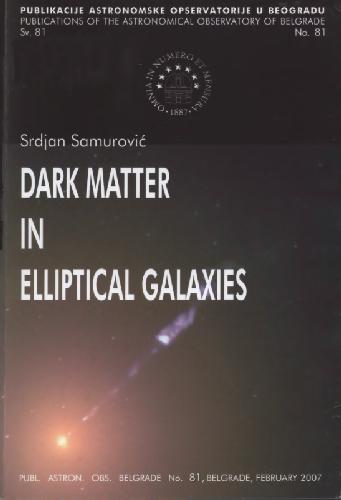
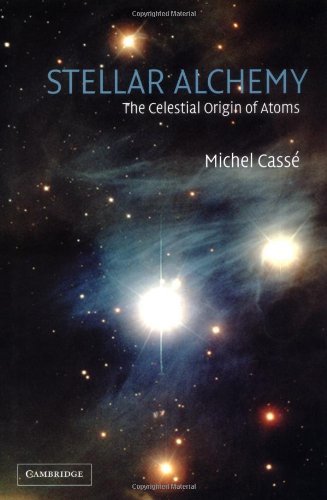
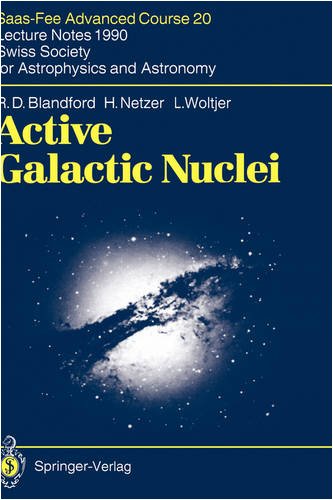
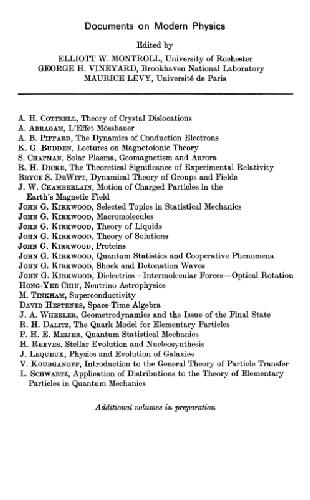
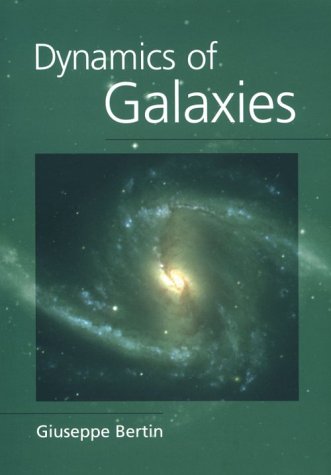

Reviews
There are no reviews yet.